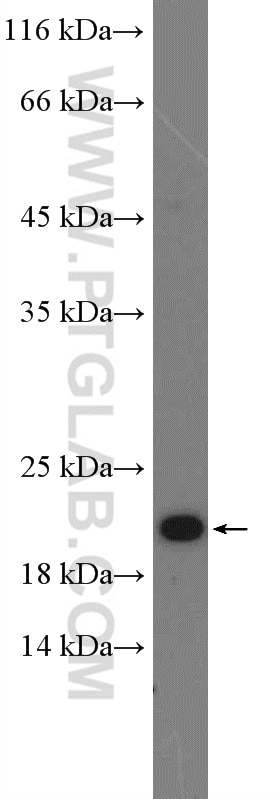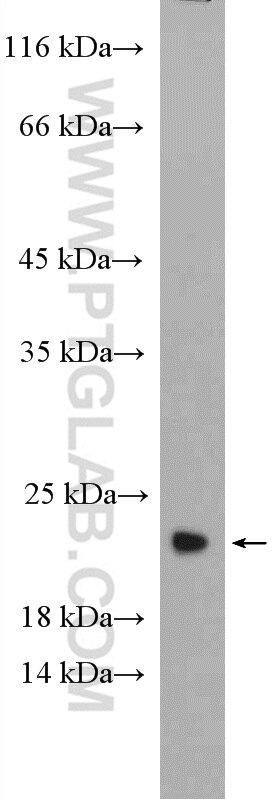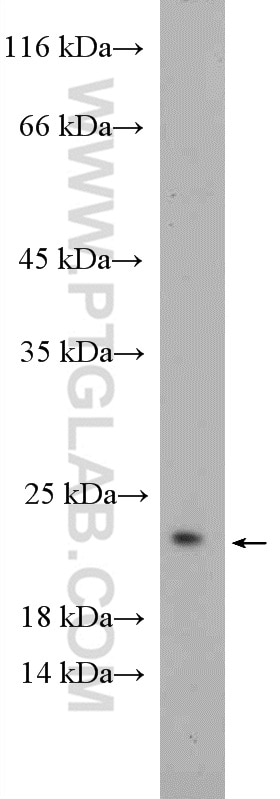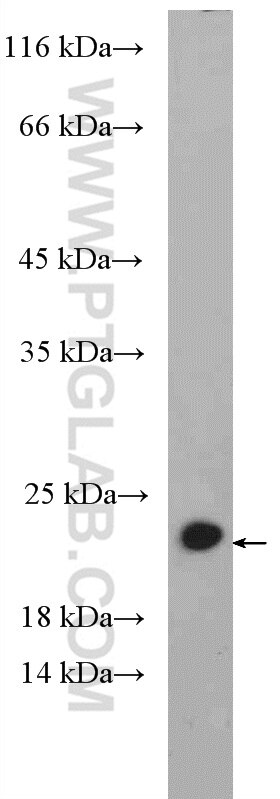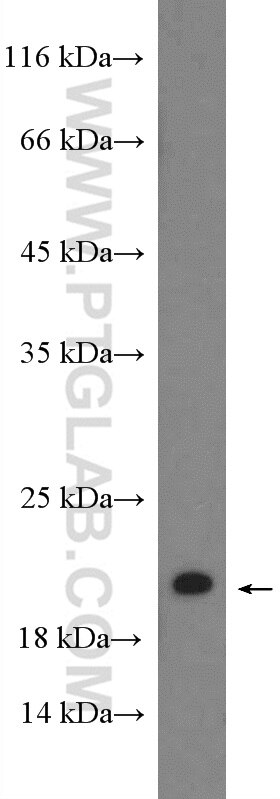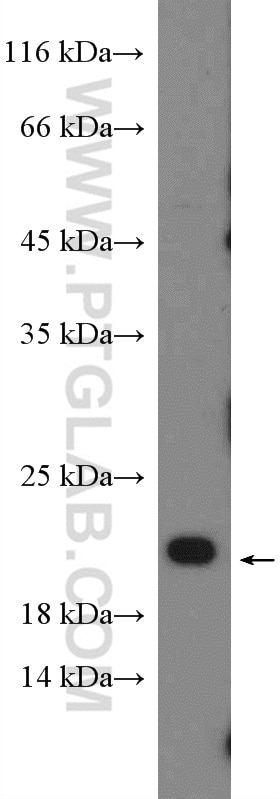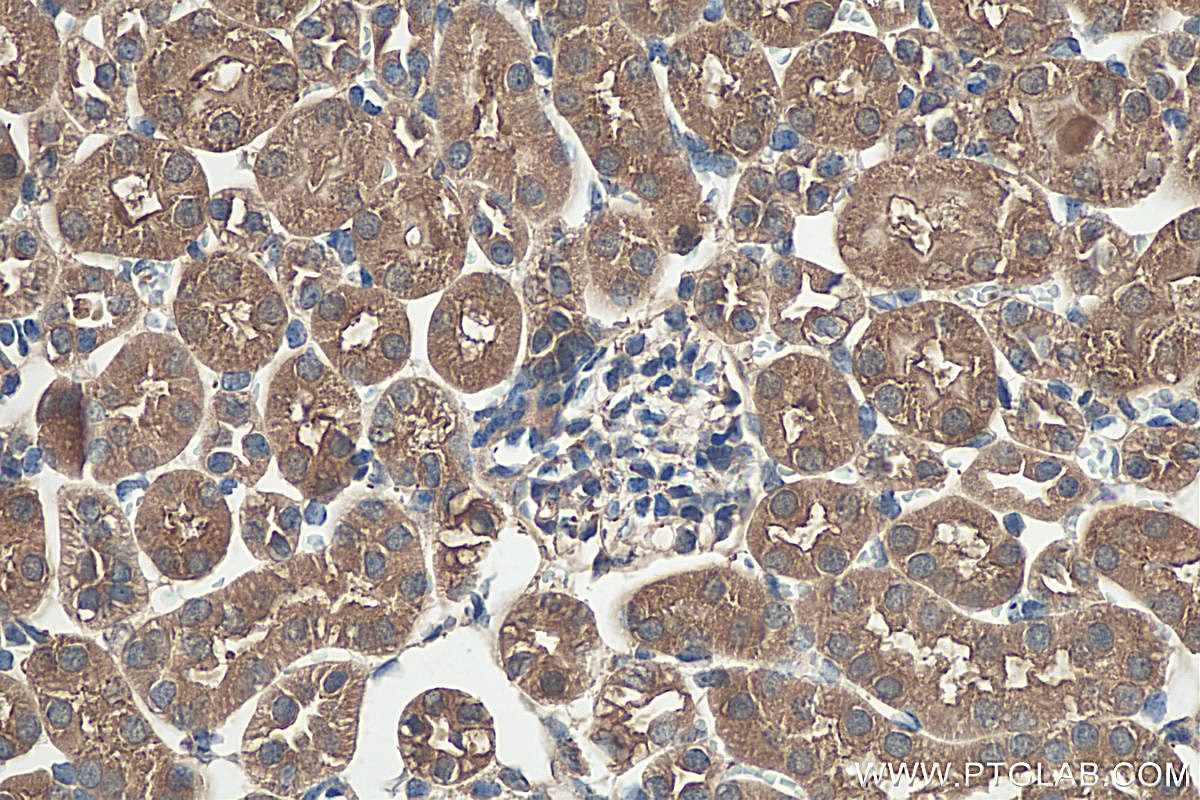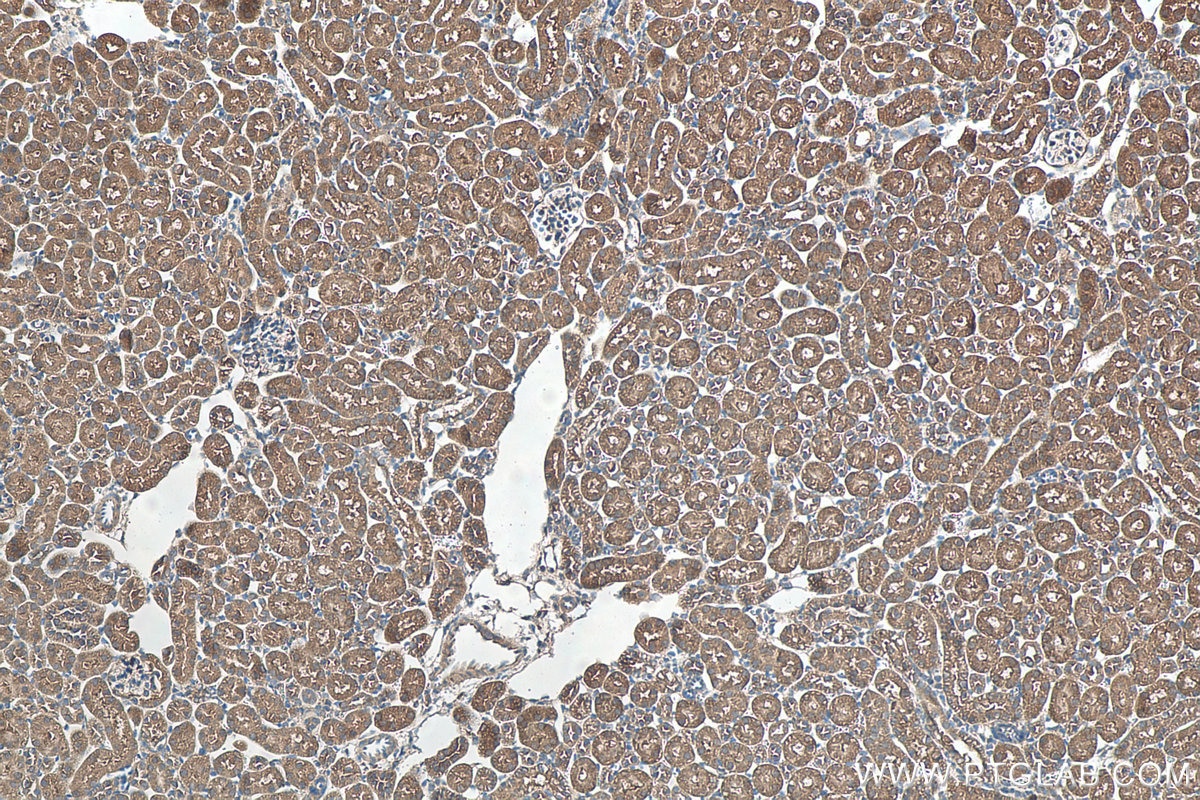Tested Applications
| Positive WB detected in | MDA-MB-453s cells, C6 cells, HeLa cells, MCF-7 cells, Neuro-2a cells, NIH/3T3 cells |
| Positive IHC detected in | mouse kidney tissue Note: suggested antigen retrieval with TE buffer pH 9.0; (*) Alternatively, antigen retrieval may be performed with citrate buffer pH 6.0 |
Recommended dilution
| Application | Dilution |
|---|---|
| Western Blot (WB) | WB : 1:500-1:2000 |
| Immunohistochemistry (IHC) | IHC : 1:50-1:500 |
| It is recommended that this reagent should be titrated in each testing system to obtain optimal results. | |
| Sample-dependent, Check data in validation data gallery. | |
Product Information
19671-1-AP targets RHOG-Specific in WB, IHC, ELISA applications and shows reactivity with human, mouse, rat samples.
| Tested Reactivity | human, mouse, rat |
| Host / Isotype | Rabbit / IgG |
| Class | Polyclonal |
| Type | Antibody |
| Immunogen | Peptide Predict reactive species |
| Full Name | ras homolog gene family, member G (rho G) |
| Calculated Molecular Weight | 21 kDa |
| Observed Molecular Weight | 21 kDa |
| GenBank Accession Number | NM_001665 |
| Gene Symbol | RHOG |
| Gene ID (NCBI) | 391 |
| RRID | AB_2878593 |
| Conjugate | Unconjugated |
| Form | Liquid |
| Purification Method | Antigen affinity purification |
| UNIPROT ID | P84095 |
| Storage Buffer | PBS with 0.02% sodium azide and 50% glycerol pH 7.3. |
| Storage Conditions | Store at -20°C. Stable for one year after shipment. Aliquoting is unnecessary for -20oC storage. 20ul sizes contain 0.1% BSA. |
Background Information
RHOG, also named as ARHG, belongs to the small GTPase superfamily and Rho family. It is required for the formation of membrane ruffles during macropinocytosis. And it is required for the formation of cup-like structures during trans-endothelial migration of leukocytes. In case of Salmonella enterica infection, it is activated by SopB and SGEF, which induces cytoskeleton rearrangements and promotes bacterial entry. This antibody is specific to RHOG.
Protocols
| Product Specific Protocols | |
|---|---|
| WB protocol for RHOG-Specific antibody 19671-1-AP | Download protocol |
| IHC protocol for RHOG-Specific antibody 19671-1-AP | Download protocol |
| Standard Protocols | |
|---|---|
| Click here to view our Standard Protocols |
